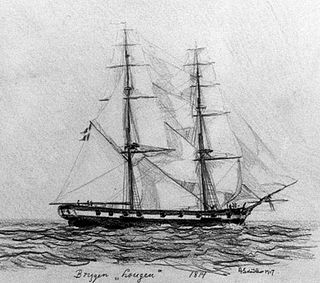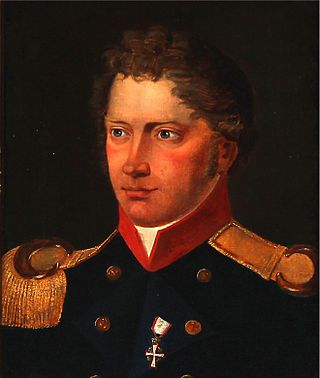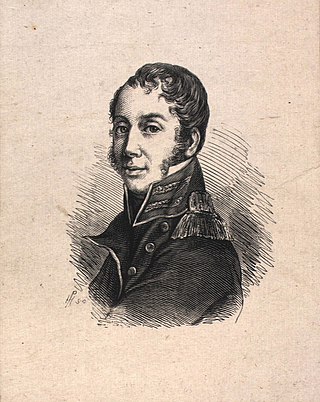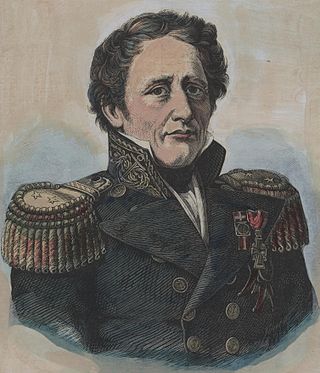Related Research Articles

The Gunboat War was a naval conflict between Denmark–Norway and the British during the Napoleonic Wars. The war's name is derived from the Danish tactic of employing small gunboats against the materially superior Royal Navy. In Scandinavia it is seen as the later stage of the English Wars, whose commencement is accounted as the First Battle of Copenhagen in 1801.

HMS Porcupine was a Royal Navy Banterer-class post ship of 24 guns, launched in 1807. She served extensively and relatively independently in the Adriatic and the Western Mediterranean during the Napoleonic Wars, with her boats performing many cutting out expeditions, one of which earned for her crew the Naval General Service Medal. She was sold for breaking up in 1816 but instead became the mercantile Windsor Castle. She was finally sold for breaking up in 1826 at Mauritius.

HMS Weazel was a Royal Navy 18-gun Cruizer-class brig-sloop, launched in 1805 at Topsham, Devon. She saw active service in and around the Mediterranean during the Napoleonic Wars resulting in her crews earning three clasps to the Naval General Service Medal, was decommissioned in 1815, and was sold for breaking in 1825.

HMS Tartar was a 32-gun fifth-rate Narcissus-class frigate of the Royal Navy, built at Frindsbury and launched in 1801. She captured privateers on the Jamaica station and fought in the Gunboat War and elsewhere in the Baltic before being lost to grounding off Estonia in 1811.

The Battle of Alvøen was a naval battle of the Gunboat War between Denmark-Norway and the United Kingdom of Great Britain and Ireland. It was fought on 16 May 1808 in Vatlestraumen, outside Bergen in Norway, between the British frigate HMS Tartar and a Norwegian force consisting of four kanonjolles and one kanonsjalupp.

HMS Seagull was the name vessel for the Seagull class of brig-sloops of the Royal Navy. She was launched on 1 July 1805 and saw active service under the British flag in Danish waters until 19 June 1808 when Dano-Norwegian forces sank her. The Danes raised her and refitted her for service in the Dano-Norwegian Navy, which she served until the end of the English Wars in 1814. She then was transferred to the Norwegians. She was finally decommissioned in 1817.

HDMS Lougen was a Danish naval brig launched in 1805. She saw service in the Danish navy and participated in two notable actions against the British Royal Navy during the Gunboat War. In 1814, as a result of the Treaty of Kiel, the Danes transferred her to the Norwegian navy. The Norwegians sold her to German merchants in the Scheld in 1825. She was finally shipwrecked near Bremerhaven in 1881.

Peter Nicolay Skibsted (1787–1832) was a Danish naval officer with a successful career marred only by the loss in 1810 of a squadron of three gunboats under his command to the British.
HMS Ambush, or Ambush No. 5, was the American Gunboat No. 5, launched in 1805. She served in the Mediterranean later that year. The Royal Navy captured her at the Battle of Lake Borgne on 14 December 1814. She was sold in 1815.

Hans Peter Holm was a Danish naval officer who commanded vessels of the Dano-Norwegian Navy in several actions. He commanded several naval vessels during the Gunboat War. His most important action occurred in 1812 at the Battle of Lyngør when a British squadron, led by the British ship-of-the-line HMS Dictator, destroyed his vessel, HDMS Najaden. Holm sustained wounds in the battle but survived, only to drown in an accident shortly afterwards.
HDMS Lolland was launched in March 1810. She served in at least four major engagements during the Gunboat War before she was transferred to the Norwegian navy after the Treaty of Kiel brought about the separation of Norway from Denmark in 1814. Lolland continued to serve with the Norwegian Navy until sold in 1847.

The Norwegian gun-ships were a class of ten armed schooners that served first in the Royal Dano-Norwegian Navy, and then after 1814 in the Royal Norwegian Navy. The first was launched in 1808 and the last was lost in 1872.

Jochum Nicolay Müller was a Norwegian naval officer who, as a midshipman, excelled at mathematics. As a junior lieutenant he met Horatio Nelson, and as a captain commanded the Finnmark squadron. He finally rose to the rank of Vice Admiral in the independent Royal Norwegian Navy.
Evert Andersen was a Norwegian-Danish sea captain who fought in the Gunboat War against Great Britain and Sweden 1807–09.

HNoMS Storm was a 1.-class torpedo boat constructed in 1898. Storm served the Royal Norwegian Navy for almost 42 years, including neutrality protection duties during the First World War. She was lost in the 1940 Norwegian campaign of the Second World War. During the Norwegian Campaign, she was the only Norwegian warship that launched a torpedo against the invading Germans.
The Capture of Arendal occurred on 9 April 1940 and saw the German torpedo boat Greif land a force of bicycle troops and seize an invasion beachhead at the Norwegian port town of Arendal. The main aim of the landing, part of the German invasion of Norway, was to sever the undersea telegraph cable between Arendal and the United Kingdom.
HMS Redbreast was an Archer-class brig of the British Royal Navy. She captured some small merchant vessels and privateers. She also participated in two actions that would in 1847 earn her surviving crew members clasps to the Naval General service Medal (NGSM). The Navy transferred in 1816 to His Majesty's Customs. She was finally sold in 1850.
HMS Cherokee was the lead ship of her class of 10-gun brig-sloops of the British Royal Navy. She saw service during the Napoleonic Wars. In 1810 she participated in an engagement that resulted in her crew qualifying for the Naval General Service Medal. The Navy sold Cherokee in 1828. She then became a merchantman trading between Liverpool and Africa. Cherokee was wrecked in August 1831 returning to England from Africa.
Allied Forces South Norway (SONOR) was a NATO command tasked with the defense of Southern Norway. SONOR's area of responsibility included all of Norway with the adjacent sea territory excluding the three northernmost counties of Norway, which were under Allied Forces North Norway.

HMS Tickler was launched in August 1808 at Brightlingsea as a later Archer-class gunbrig. She served in the Channel and the Baltic until the Danes captured her in 1808 during the Gunboat War. They sold her in 1815. From 1815 to 1852 she sailed as Frederikke Louise, first as a merchantman and then from 1843 to 1851 as a sealer.
References
- Danish Sources
- (in Danish)T. A. Topsøe-Jensen og Emil Marquard (1935) “Officerer i den dansk-norske Søetat 1660-1814 og den danske Søetat 1814-1932“. Two volumes. (Danish Naval Officers) Download here.
- Fra Krigens Tid (From the wartime 1807-1814) edited by N A Larsen, Christiana 1878 (Index Page)